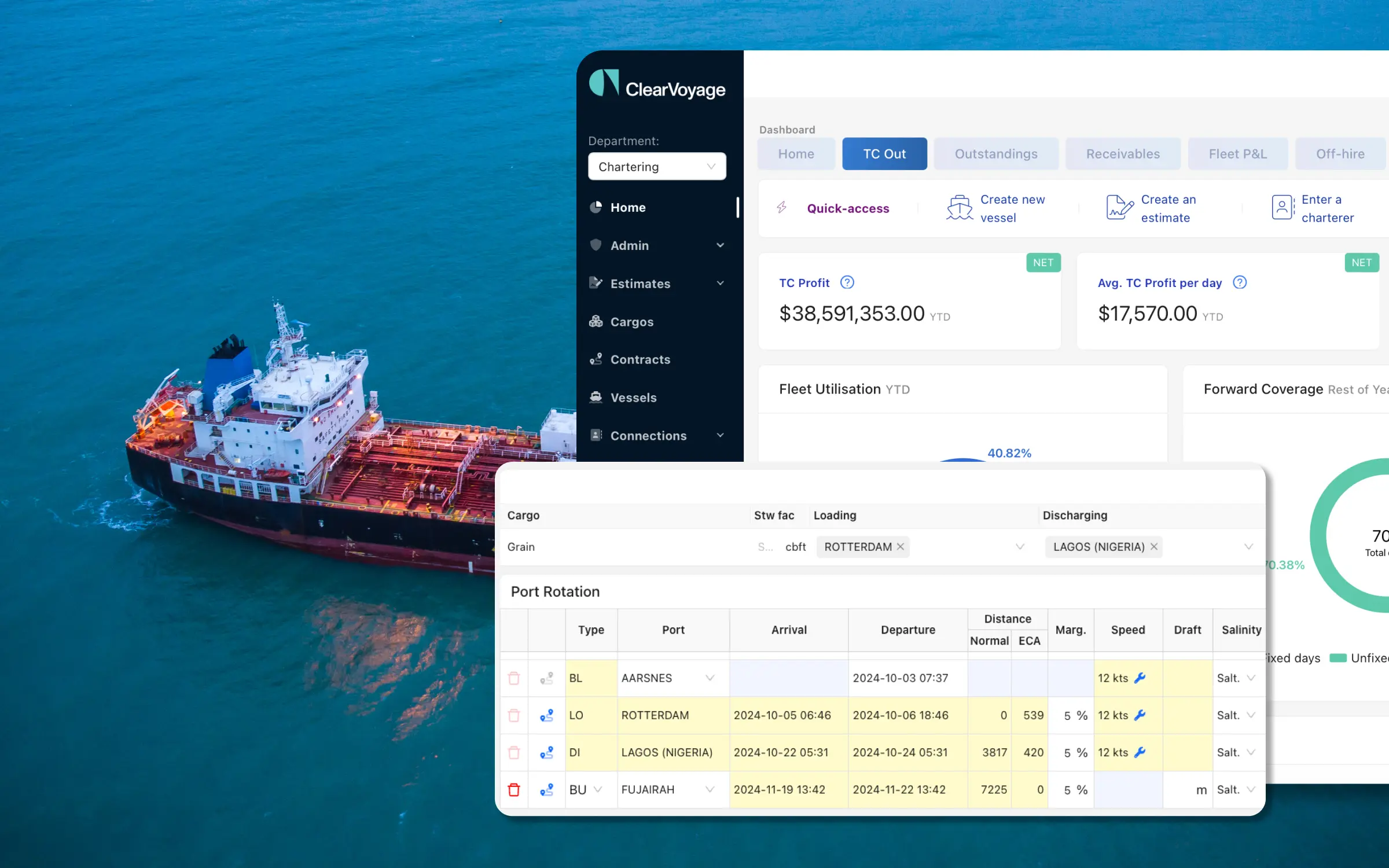Oct 16, 2024
In the maritime industry, efficient communication and accurate reporting are crucial for ensuring smooth operations. One key aspect of this communication is the noon report—a daily update that provides essential information about a vessel's performance and conditions during a voyage. In this blog, we will explore what a noon report is, why it is important, and how it can be optimized using a Voyage Management System (VMS).
What is a Noon Report?
A noon report is a standardized communication from the bridge of a vessel that summarizes key operational data at noon (UTC) each day. This report is sent to various stakeholders, including the ship owner, charterer, and operational managers.
Noon Report Format
The noon report format typically includes the following components:
Vessel Information: Name, type, and identification number of the vessel.
Date and Time: The date and time the report is generated, often specified in UTC.
Position: Latitude and longitude of the vessel's current location.
Course and Speed: The vessel's course (in degrees) and speed (in knots).
Weather Conditions: Details on wind speed, direction, sea state, and visibility.
Fuel Consumption: Data on fuel usage and remaining fuel levels.
Cargo Status: Current status of the cargo, including any changes.
Other Observations: Any notable occurrences or incidents that may have happened during the reporting period.

Noon Report Example
A noon report is a structured document that provides essential information about the vessel's operations at a specific time, typically noon UTC. It should include the following key components:
Vessel Information: This section identifies the vessel by name, type, and registration details to ensure clarity about which ship is reporting.
Date and Time: The report should specify the date and the exact time of the report, typically in Coordinated Universal Time (UTC).
Position: The current geographical location of the vessel should be indicated, typically in latitude and longitude.
Course and Speed: The vessel's current course in degrees and speed in knots should be documented to give a clear picture of the ship's navigation.
Weather Conditions: This includes a summary of the weather at the time of reporting, such as wind speed and direction, sea state, visibility, and any other relevant meteorological observations.
Fuel Consumption: This section tracks the rate of fuel consumption and provides information on the remaining fuel on board, which is crucial for voyage planning.
Cargo Status: Any changes or issues related to the cargo should be noted, ensuring that stakeholders are aware of its condition and handling.
Other Observations: Any additional remarks or observations made by the crew during the reporting period should be included, such as maintenance tasks completed or notable incidents.
By consistently documenting these components, vessels can maintain an accurate log of their operations and facilitate better communication with shore-based teams.
Importance of Noon Reports
The noon report vessel serves several critical purposes:
Operational Oversight: It provides stakeholders with real-time data about the vessel's performance, enabling them to make informed decisions.
Performance Tracking: By consistently documenting key metrics, companies can analyze trends over time, improving efficiency and identifying areas for cost savings.
Safety and Compliance: Accurate reporting helps ensure compliance with international maritime regulations and safety protocols.
Communication: Noon reports foster effective communication between the ship and shore-based operations, enhancing collaboration.
How a Voyage Management System Can Help
A Voyage Management System (VMS) can significantly enhance the efficiency and accuracy of noon reports. Here are several ways a VMS can support this process:
1. Automated Data Collection
A VMS can automate the collection of data needed for noon reports, reducing manual entry errors and ensuring that information is captured in real time. This helps maintain the accuracy of the report and saves valuable time for the crew.
2. Centralized Reporting
With a VMS, all noon reports can be centralized in one platform, making it easy to access historical data and trends. This allows for quick comparisons and analyses, facilitating better decision-making.
3. Customizable Templates
A VMS often provides customizable templates for ship noon reports, ensuring that all necessary information is included while adhering to company standards. This flexibility can help ship operators streamline their reporting processes.
4. Enhanced Collaboration
A VMS enables better communication between crew members and shore-based operations by allowing real-time sharing of noon reports. This can lead to quicker responses to any issues that may arise during the voyage.
5. Performance Analytics
Using the data from noon reports, a VMS can generate insights into vessel performance, fuel efficiency, and compliance. This data can inform future operations and strategic decisions.
If you're interested in optimizing your vessel management processes, consider exploring how ClearVoyage’s VMS can enhance your operations. With features designed to streamline reporting and improve efficiency, our system is tailored to meet the needs of modern shipping companies.
Unlocking More Insights
Want to delve deeper into the world of maritime operations? Check out our recent blog on Laytime Management to uncover strategies that enhance operational efficiency and profitability. Understanding laytime alongside noon reports can provide a comprehensive view of voyage management, allowing you to navigate the complexities of shipping with confidence.
Conclusion
Noon reports are an essential component of effective maritime operations. By ensuring that accurate and timely data is communicated between the vessel and stakeholders, these reports play a critical role in maintaining operational efficiency, safety, and compliance. Leveraging a Voyage Management System can streamline this process, allowing ship operators to focus on their core responsibilities while enhancing performance and decision-making.
